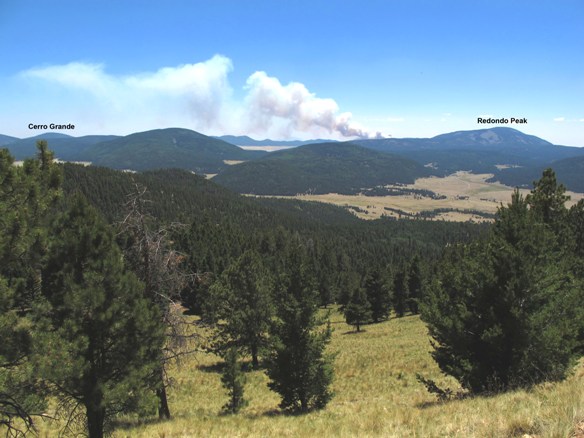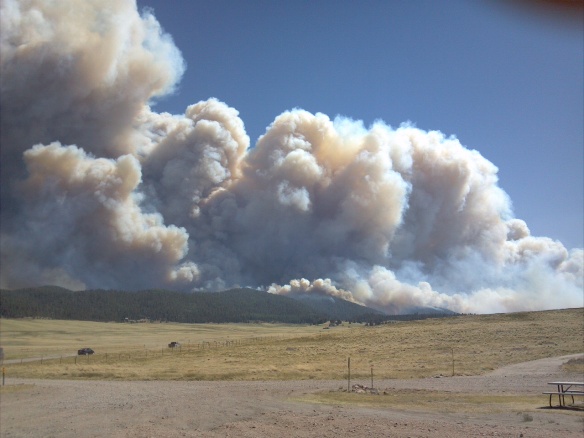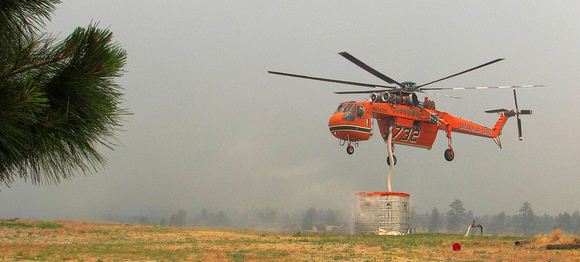Today we have a guest post written by Dan O’Brien, who has over 39 years of experience in wildland fire management. Dan was Chief of Fire and Aviation for three different regions in the National Park Service: the North Atlantic, Rocky Mountain, and Intermountain regions. Currently he is on the staff of Wildland Fire Associates.
==============================

I have always thought fire information folks have one of the most difficult jobs in fire. They must get the information their different audiences are looking for and distribut it in a timely manner. Operations folks are charged with managing the “actual fire”, but the information staff must manage the “perceived fire” through the information they distribute. While different information outlets are aimed at different audiences it seems that there are often significant gaps, inconsistencies and timeliness issues in the information released.
With regard to information concerning the Las Conchas Fire today (7/1/11) NICC’s daily Situation Report references such current information as:
Active fire behavior. Numerous residences threatened. Evacuations in effect.
It would seem that “numerous residences threatened” might be a bit of an understatement considering there are 11,000 residents in Los Alamos, but it is not mine to split hairs.
Today’s InciWeb page concerning the Las Conchas Fire seems to target the locals and their concerns. Meeting places and times, shelters, closures, pet issues, number and type of resources, etc. are important issues that are adequately addressed. Additionally, there are descriptions of yesterday’s fire behavior, operational objectives and strategies. All this information is accurate, but what is the significance of making all this information available without interpreting it to the public? Reporting 4 dozers, 67 engines, 24 water tenders is pretty useless information in and of itself. Explaining that the engines and water tenders are being used to directly protect residences and other values would go much farther in helping the public understand the need for these and other resources and could go a long way in helping to correctly develop the public’s perception of the fire. I have never heard any information about the effect, positive or negative, of the 2000 Cerro Grande fire on the management of the Las Conchas Fire. Considering 400 families lost their home to the Cerro Grande Fire 11 years ago, I would think there would be an interpretive opportunity in there someplace.
This morning I see on a national news network that the residents of Los Alamos are going to be allowed to return to their homes on Sunday. Other information is reported such as the success or failure of firefighters in keeping a fire from crossing a road or drainage is the sort of information a large segment of the public wants to know and be kept current on. InciWeb is silent concerning these subjects and seems content to report only what has already happened.
Bottom line is that the fire information folks do an excellent job of gathering a lot of information, but then often refrain from doing even basic interpretation that could make the information meaningful to their publics. Just one man’s opinion………
============================
Note from Bill:
Last year we wrote about an outside-the-box method for providing fire information to the public. In that case an Information Officer Trainee, Leah Mitchell, wrote an article after she was embedded with a Wildland Fire Module while she was assigned to the Cow Creek fire in Rocky Mountain National Park. At the time, we said it was one of the best articles we had ever seen about what firefighters actually do out on the fireline — and we still think so. This is an excellent method for providing one aspect of information about a fire to the public. We hope Information Officers continue to keep this tool in their tool box, although this is the only time we have heard of an agency employee embedding with a fire crew in order to collect information for an article.
Fire-qualified and red-carded agency employees have access to remote firelines and background wildfire knowledge that reporters will never have. Allowing them to actually write articles about ongoing fires, rather than only expecting InciWeb or the dwindling number of newspaper reporters to get the agencies’ messages out to the public, is a smart strategy.










